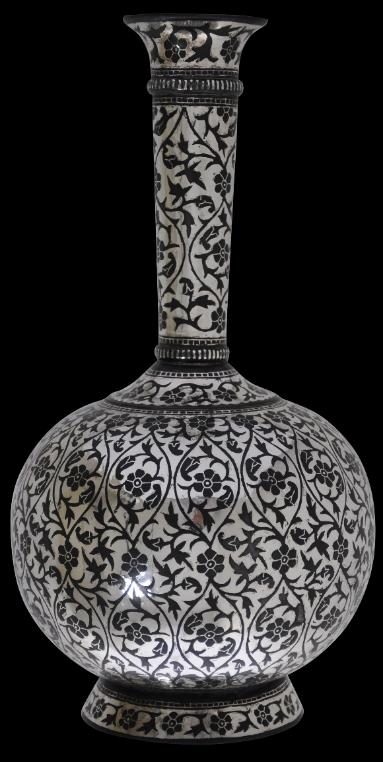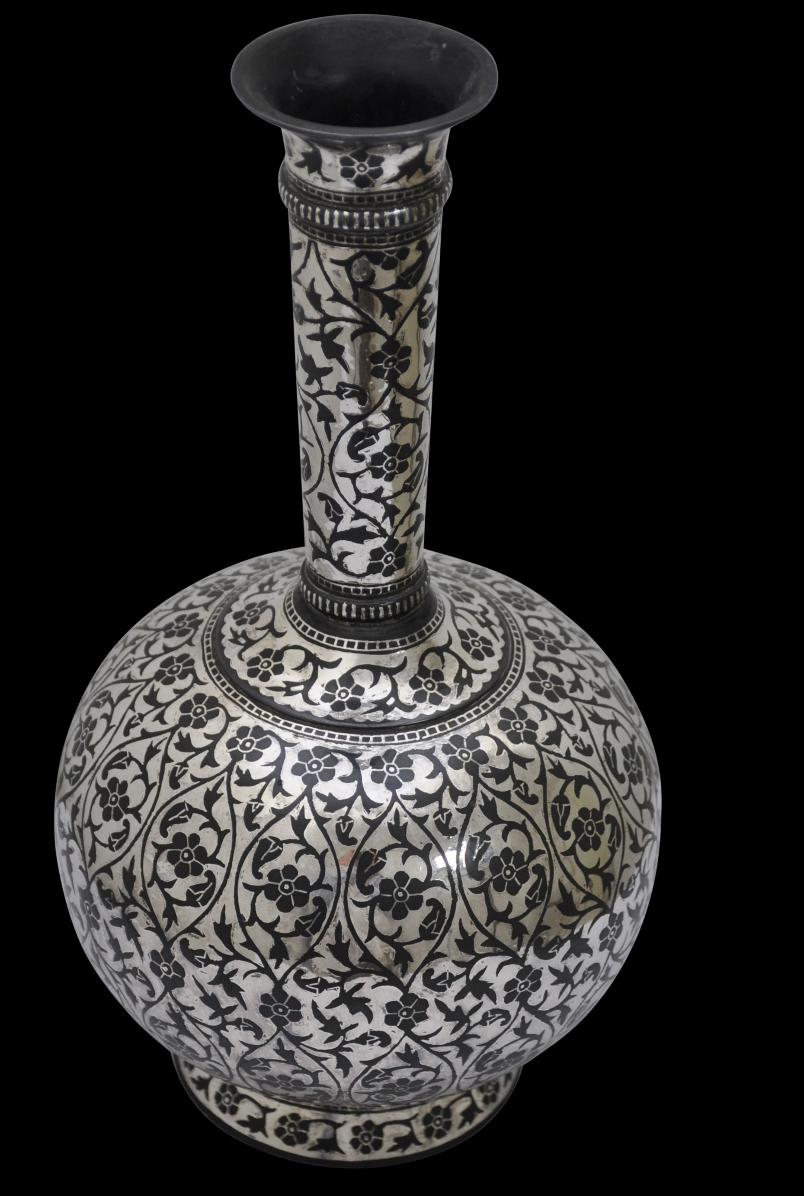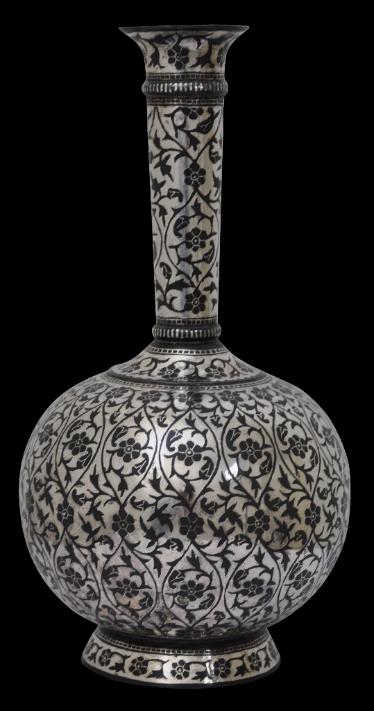
Silver Bidri Flask or Vase, Bidar, India
Silver Bidri Flask or Vase
Bidar, India
late 19th century
height: 30cm, weight: 1,882g
This tall, very decorative flask has been decorated using the bidri technique – although rather than the design and motifs being inlaid in silver, the reverse is true, whereby the pattern has been cut out of silver sheet and then what is left has been inlaid into the vessel, so that the pattern in apparent as dark rather than light-coloured silver fields.
It sits on a low, flared, ring foot; has a spherical bod, and a tall thin neck.
Bidriware is believed to have originated in the city of Bidar in the Deccan. It is cast from an alloy of mostly zinc with copper, tin and lead. The vessels are
overlaid or inlaid with silver, brass and sometimes gold. A paste that contains sal ammoniac is then applied which turns the ally dark black but leaving the
silver, brass and gold unaffected.
Bidriware caused great interest at the Great Exhibition in London in 1851. It found new European markets and helped to keep alive the craft as demand fell in
India with the decline of many of the smaller courts and landed families.
The example here is in excellent condition.
References
Mittal, J., Bidri Ware and Damascene Work: in Jagdish & Kamla Mittal Museum of Indian Art, Jagdish & Kamla Mittal Museum or Art, 2011.
Provenance
UK art market
Inventory no.: 4483
SOLD




